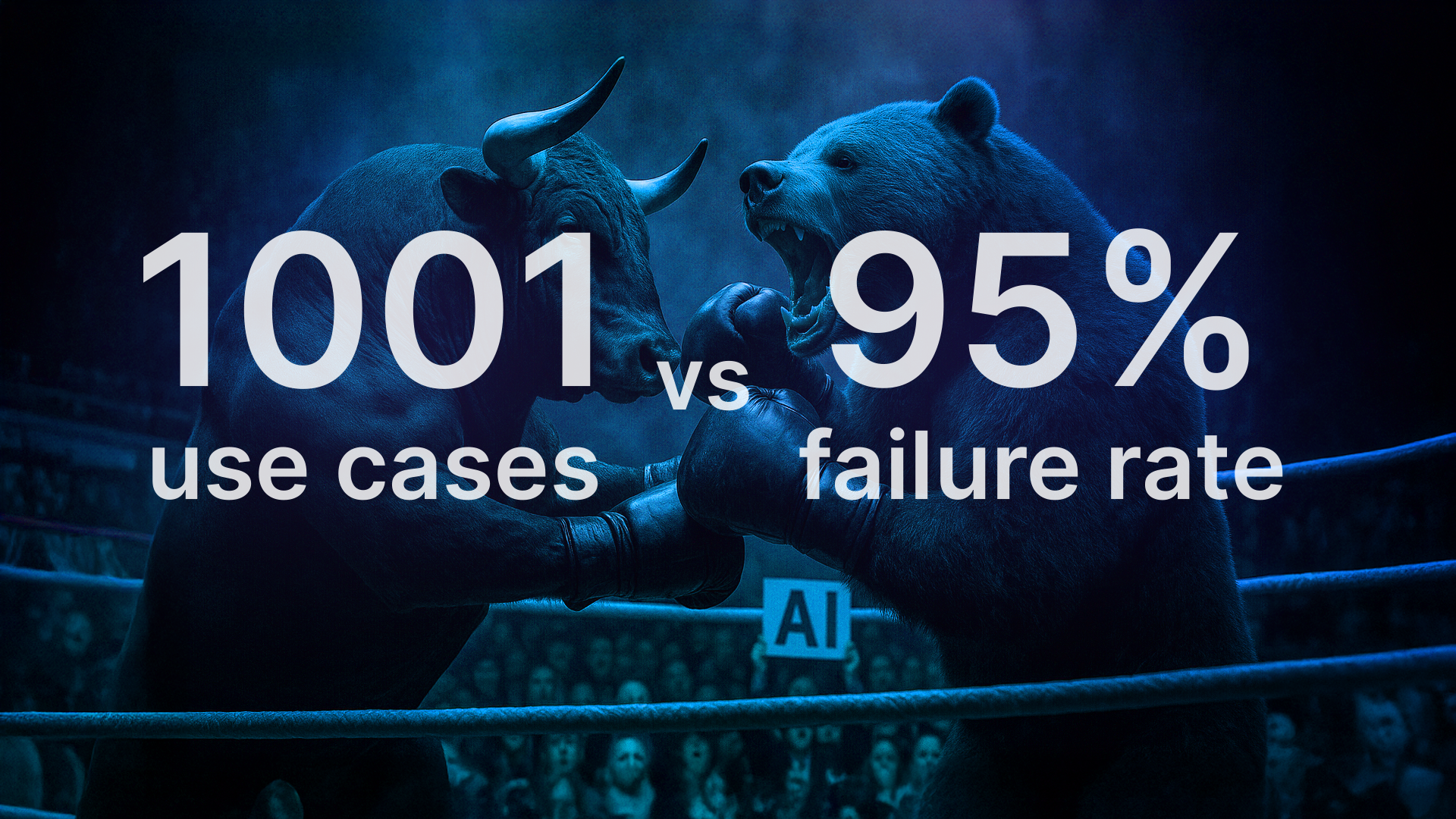The AI Paradox: 1,001 Real-world Use Cases vs 95% Failure Rate. Who's right?

On one side, we see an explosion of possibility. Catalogs like Google's list over 1,001 generative AI use cases. We see Toyota enabling factory workers to build their own AI models, Uber summarizing support tickets in seconds, and legal teams using AI to review contracts. These aren't fantasies; they are real, in-production applications for R&D, customer service, marketing, and operations.
On the other side, we have the stark warning from MIT, highlighted by Fortune and Harvard Business Review: an estimated 95% of enterprise generative AI pilots fail to reach production. They stall in "pilot purgatory," never delivering a clear ROI.
As a technology leader who has spent 30 years bridging the gap between innovation and business outcomes, I see the disconnect clearly. The 95% failure rate isn't because the technology is flawed. It's because the strategy is.
I see companies failing at the "last mile" of implementation. Many are buying "AI" as a product, not as a solution to a specific, expensive business problem. The successful 5% understand this. The other 95% are making three critical mistakes.
1. The ROI Mismatch: Chasing "Flashy" Instead of "Valuable"
True success lies in optimizing the unglamorous, high-friction, and expensive processes that run your company.
- Failure: A pilot to create "more creative" marketing slogans that has no measurable P&L impact.
- Success: Applying AI to your internal knowledge base to cut new-hire onboarding time from 3 weeks to 1. That is a hard, bankable cost saving in HR and a measurable gain in productivity.
- Success: Using AI to assist, not replace, customer service reps by summarizing a 20-minute support call in 5 seconds. This slashes resolution time, which is a key, measurable business metric.
2. The Integration Chasm: We're Building "Islands" Not "Bridges"
An AI tool is useless if it isn't deeply integrated with your core systems and proprietary data.
- A chatbot that can't access your CRM to see a customer's real-time order history is an expensive toy.
- A data-analysis tool that requires engineers to manually upload spreadsheets isn't an "automation;" it's just a new, manual process.
3. The Hidden Cost: We're Blindsided by the "Total Cost of Inference"
The "Total Cost of Inference" is the budget-killer. This includes:
- API Fees: "Pay-per-token" costs for high-volume use can run into the tens of thousands of dollars per month.
- Infrastructure: Running your own models or vector databases requires expensive, specialized cloud-hosting environments.
- Maintenance: A successful AI model is not "set it and forget it." It requires constant monitoring, re-training, and data hygiene, which many experts advise budgeting at 15-30% of the initial build cost annually.
A Practical Guide to Joining the 5%
- Don't Ask: "What can AI do?" Ask: "What is our most expensive human-in-the-loop bottleneck?"
- Don't Ask: "How accurate is the model?" Ask: "Does this make our human 30% faster?"
- Don't Ask: "What's the subscription cost?" Ask: "What is the Total Cost of Inference for 10,000 users?"
The Bleeding Edge: A Warning on AI Agents
An "AI Agent" is, in practical terms, a "digital insider." We are giving them credentials and access to our most sensitive systems.
The vulnerabilities are new and terrifying:
- Cost: An agent that gets stuck in a loop—like trying to book a flight—isn't a $0.10 prompt. It's a potential $10,000 API bill in an hour. How are you "circuit-breaking" a runaway agent?
- Security: If an attacker compromises an agent's API key, they aren't just viewing your data; they are acting with your authority. They can send your data. They can delete your systems.
- Governance: An employee builds a useful agent, then leaves the company. You are now left with an "orphaned agent"—an unmanaged, un-discoverable "digital insider" operating with unknown permissions.
Conclusion
The 1,001 use cases are real. But they only succeed when leaders start with discipline, not demos.
If you're leading AI adoption in your organization, focus on one high-value workflow, one measurable metric, and one secure deployment.
That's how you join the 5% who make AI work.
At Companywide AI, we help leadership teams do exactly that — deploying AI responsibly, profitably, and securely.
About the Author
Douglas Gintz is the Founder of Companywide AI and an AI & digital transformation leader helping organizations bridge the gap between emerging technology and real-world business outcomes. With over 30 years leading innovation across public companies, private enterprises, and disruptive startups, Douglas brings a rare blend of executive vision and hands-on execution. Through Companywide AI, he helps leaders make sense of emerging AI capabilities and deploy them responsibly, profitably, and securely.
Hashtags
#PracticalAI #AIStrategy #AIAgents #Leadership #DigitalTransformation
